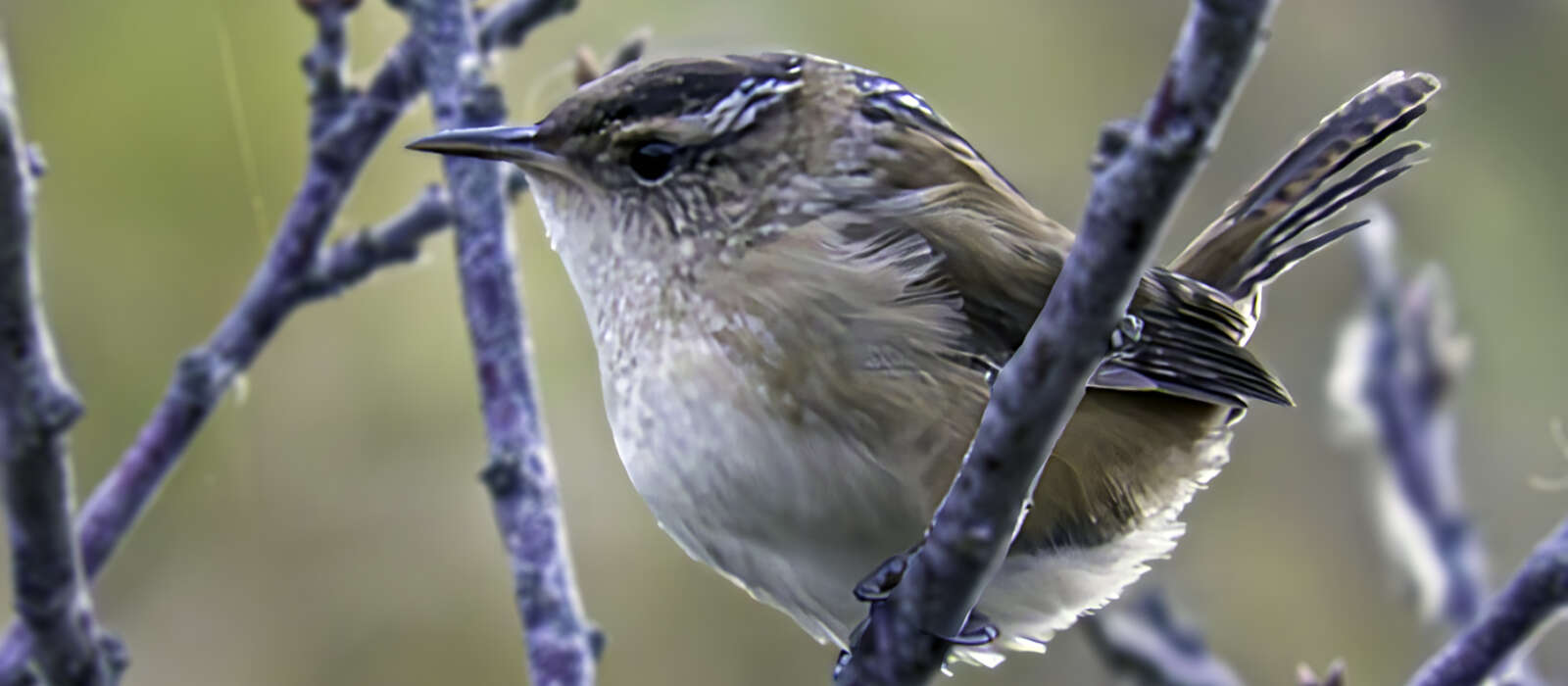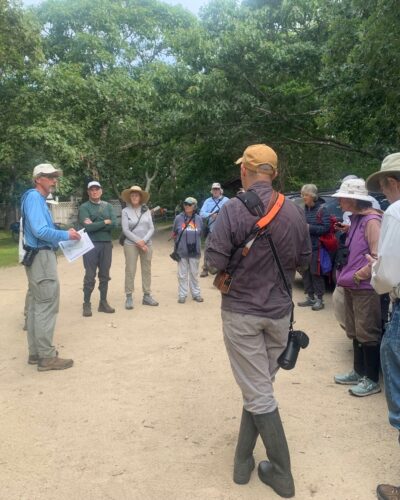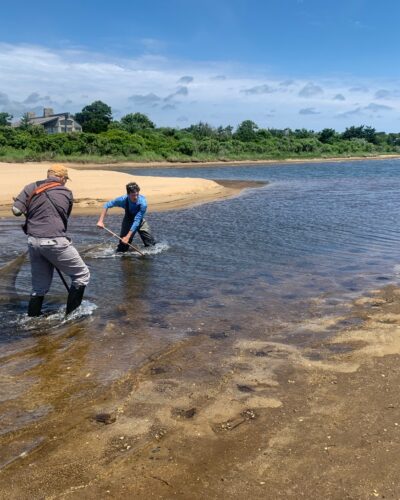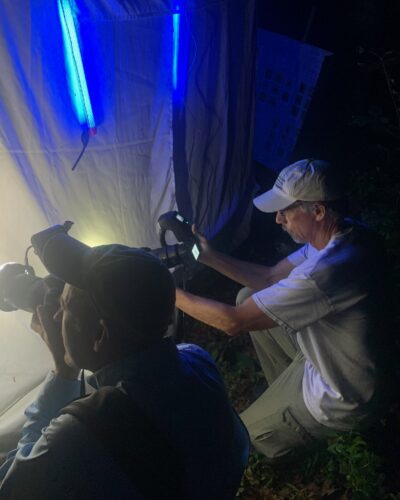2024 MVAL Year in Review
(Above: Marsh Wren, photo by Nancy Nordin)
Founded in February 2021 by BiodiversityWorks and the Betsy and Jesse Fink Family Foundation, the Martha’s Vineyard Atlas of Life project (MVAL) is a community-powered program to document and help conserve the unique biodiversity of Martha’s Vineyard. Since its formation, the MVAL has steadily added public programming, website content and functionality, and research projects to help advance its goals. In 2024, the program really hit its stride, with rapidly expanding public participation and a wealth of exciting natural history discoveries. Here’s a look at some of the program’s highlights for the year!
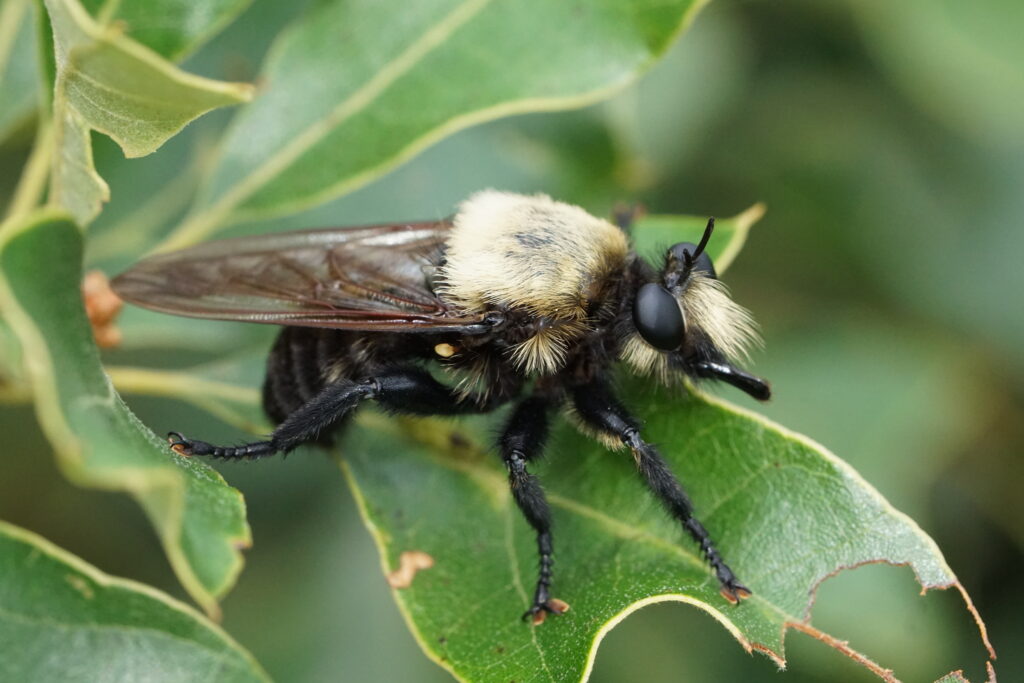
Laphria grossa
Bioblitzes: The Atlas of Life ran two bioblitzes in 2024: at Long Point Wildlife Refuge, in partnership with The Trustees, on June 28-29, and in Manuel F. Correllus State Forest, July 19-20, with the cooperation of the Massachusetts Department of Conservation and Recreation. Combined, these two events added 1,280 observations to the MVAL iNaturalist project. Highlights among the 338 species found at Long Point included an apparent first Vineyard record of a sand wasp in the Tachysphex terminatus species complex. Among the 632 iNaturalist observations from the Correllus event was the Vineyard’s first record of the massive robber fly Laphria grossa.
Farm Pollinators: The MVAL completed fieldwork on a three-year project studying pollinators on eight Vineyard farms and developing methods for island farms to increase their support of pollinators. Developed and funded by the Betsy and Jesse Fink Family Foundation, “Martha’s Vineyard Pollinator Pathway” documented nearly 300 species visiting flowers on participating farms and showed that patches of native goldenrod and aster added to farms attracted and supported a range of uncommon, specialized bees. Project observations included both very common species, such as the important pollinator Bombus impatiens (the common eastern bumblebee), and rare ones: highlights included first Dukes County records of three bee species and the first Massachusetts iNaturalist observation of the colorful parasitic wasp genus Cleonymus.
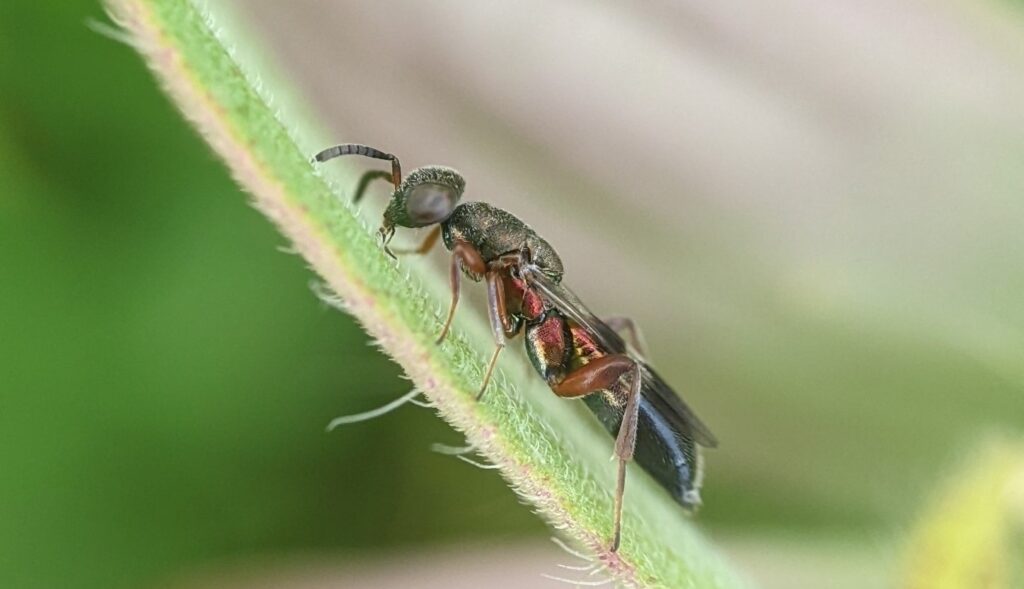
Purple milkweed (Asclepias purpurascens): A serendipitous observation along an up-Island roadside represented the first Vineyard record of this rare plant in more than a century. In 2025, we hope to work with local botanists, partner organizations, state wildlife agencies, and a town conservation commission to protect the rare plants and perhaps begin a careful off-site propagation effort to increase the security of the species, listed as “Endangered” under the Massachusetts Endangered Species Act, on Martha’s Vineyard.
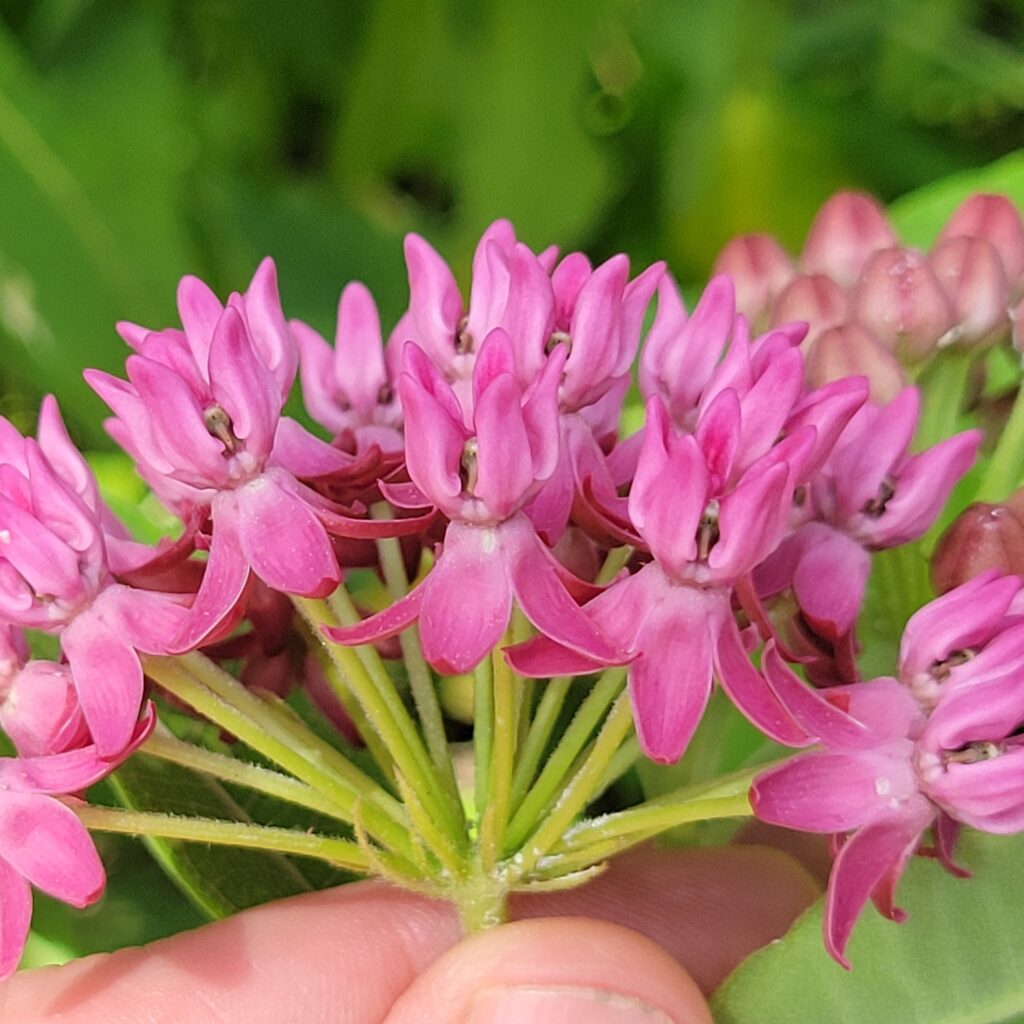
Purple milkweed (Asclepias purpurascens) flowers
Rainbow ant fly (Microdon fulgens): With the closest previous records in southern New Jersey and eastern Pennsylvania, and a range that is concentrated in the deep southeastern United States, this beautiful hoverfly was a startling find in Correllus State Forest in early July. The Vineyard population of this species, which associates with barrens habitats, was once presumably part of a unified population covering much of the East Coast. With the fly’s range now fragmented, Martha’s Vineyard appears to host a significant part of its overall diversity.
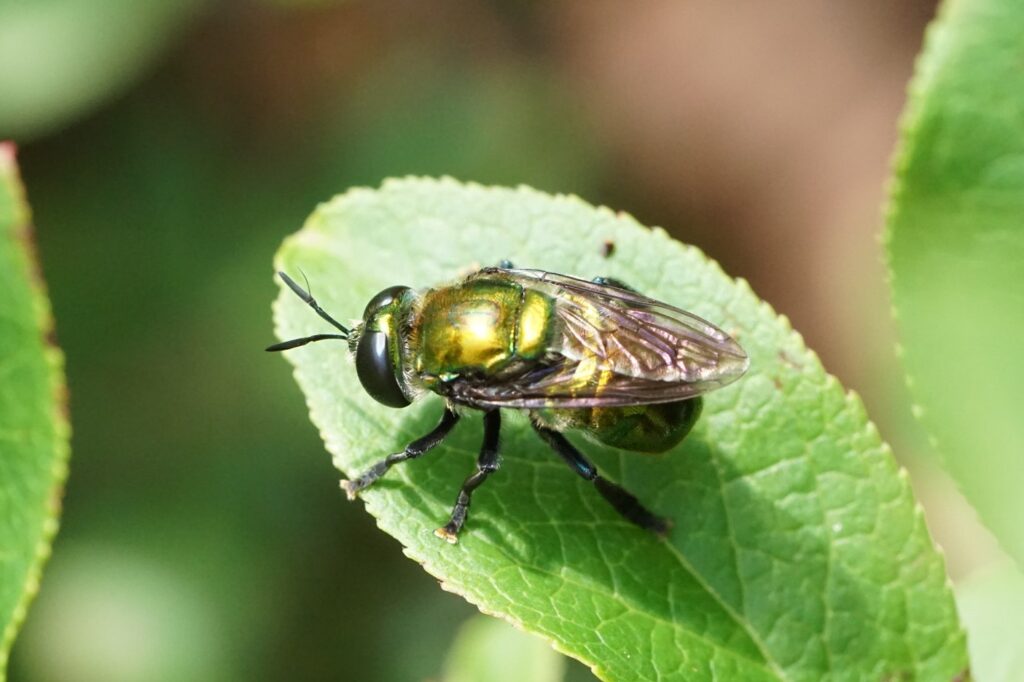
Microdon fulgens
Expanding iNaturalist Use: Use of the iNaturalist “community science” platform by Vineyard residents and visitors expanded dramatically in 2024. Collectively, iNat users contributed almost 13,000 observations representing more than 2,600 species during the course of the year. That averages out to more than 35 observations added each day! Overall, the MVAL iNaturalist project broke the 50,000 observation and 4,500 species milestones in 2024.
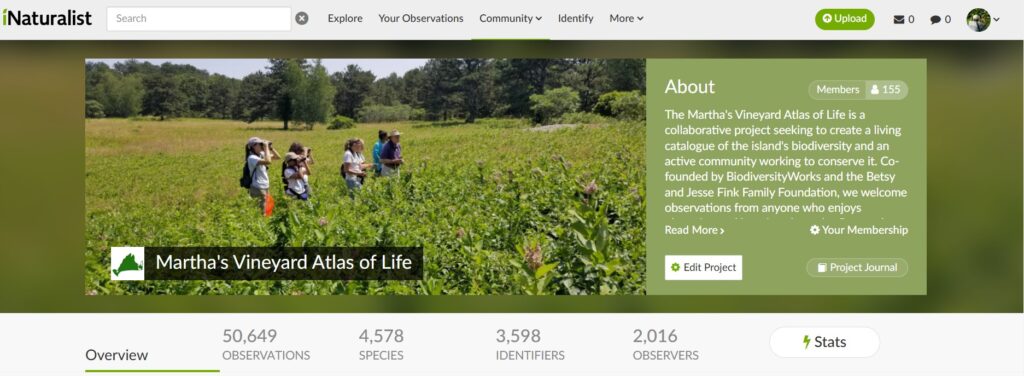
Launch of the MVAL “Data Explorer”: Thanks to the efforts of the MVAL web designer, Gabe Halberg, and Jason Loomis, a software engineer with the Vermont Center for Ecostudies, the MVAL added a powerful new capability to its website. Based on software already running on the Vermont Atlas of Life website (the model for our own Vineyard Atlas of Life), the MVAL data explorer can be accessed from the MVAL home page and provides a user-friendly way to investigate a trove of Vineyard natural history records in the vast Global Biodiversity Information Facility database.
Thanks to all who helped this year! Whether you contributed sightings or other data, supported the MVAL or BiodiversityWorks financially, helped out with a bioblitz, or attended an educational presentation or webinar, you played an important role in turning this program from a dream into a useful and powerful reality.
Matt Pelikan is the director of the Martha’s Vineyard Atlas of Life project at BiodiversityWorks. A versatile and dedicated naturalist, he has lived year-round in Oak Bluffs since 1997.
